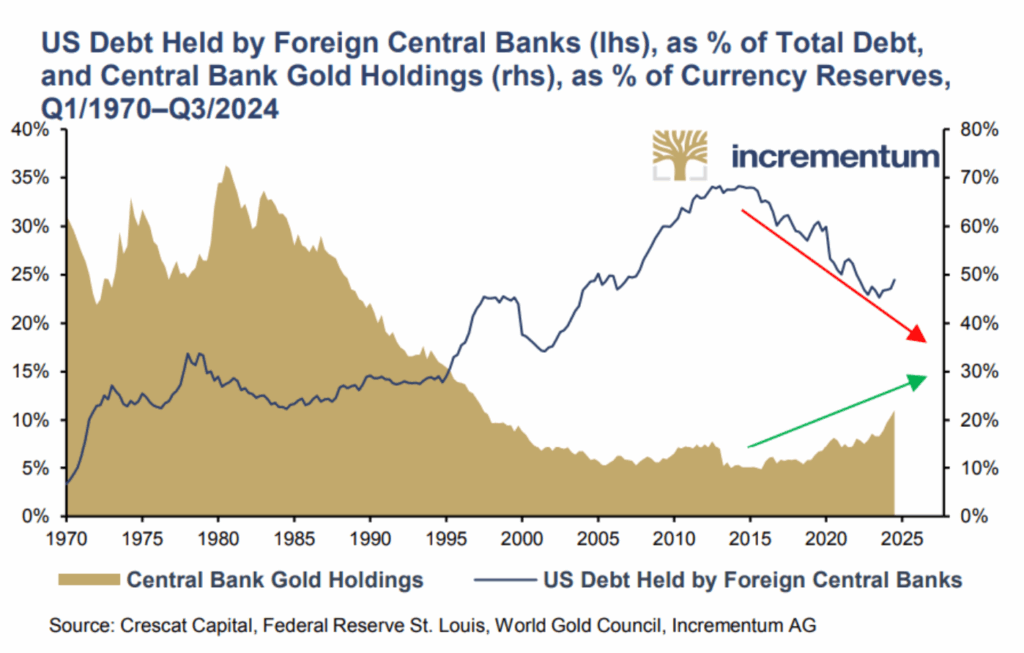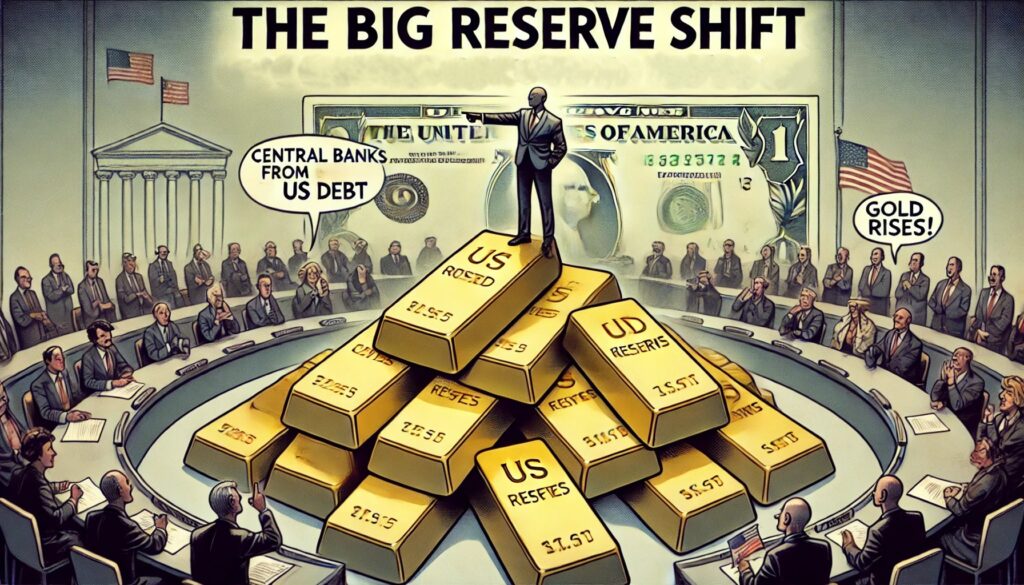A Long-Term Trend Is Changing
A significant shift is becoming evident, as illustrated by a powerful chart from Crescat Capital (see the image below), utilizing data from the World Gold Council’s Incrementum AG report.

For decades, central banks worldwide reduced their gold holdings while increasing their exposure to U.S. debt. However, this trend is now reversing, signaling the potential beginning of a new era in global finance.
Gold’s Decline — and Comeback
From the 1970s to the mid-1980s, central banks held approximately 25% to 30% of their currency reserves in gold. Following that period, gold’s share steadily declined, dropping to just 5%–6% of total reserves by the 2010s. Recently, though, gold has started to make a comeback, with reserves climbing back to nearly 11%. Many experts believe this is just the beginning of a larger trend.
U.S. Debt Is No Longer the Favorite
In contrast, U.S. debt held by foreign central banks rose sharply from the 1980s to the 2010s, increasing from 30% to almost 70% of global reserves. Now, this trend is also reversing. Since the mid-2010s, U.S. debt holdings by foreign central banks have dropped to nearly 50%, with indications pointing towards further reductions in the years to come.
Not a Short-Term Move — A Century-Level Shift
This change is not merely a short-term adjustment; it signifies a deeper, long-term transition that typically occurs once a century. Just as historical global powers—like Spain, the Netherlands, and Britain—saw their currencies lose reserve status, the U.S. dollar may be on a similar path. The world appears to be gradually shifting towards a new monetary system, with gold at its center.
Why This Matters for Investors
These changing dynamics could reshape how central banks and investors approach global reserves. As trust in fiat currencies diminishes and the dominance of U.S. debt is called into question, gold’s role as a secure, long-term store of value is rising. Understanding these macro shifts can help investors prepare for the future, influencing asset allocation, currency exposure, and long-term strategies.
The Transition Has Just Begun
The shift back toward gold and away from U.S. debt is still in its early stages. If history is any guide, this transition could continue over the next 10 to 20 years. We may see gold rise to 20% to 25% of central bank reserves once again, while U.S. debt holdings could fall to similar levels. This transformation is likely to unfold within our lifetimes, making it essential to keep track of these developments.
What are your thoughts on the long-term role of gold and the future of the U.S. dollar? Share your views in the comments below! If you found this blog informative, don’t forget to SHARE it with your friends!










